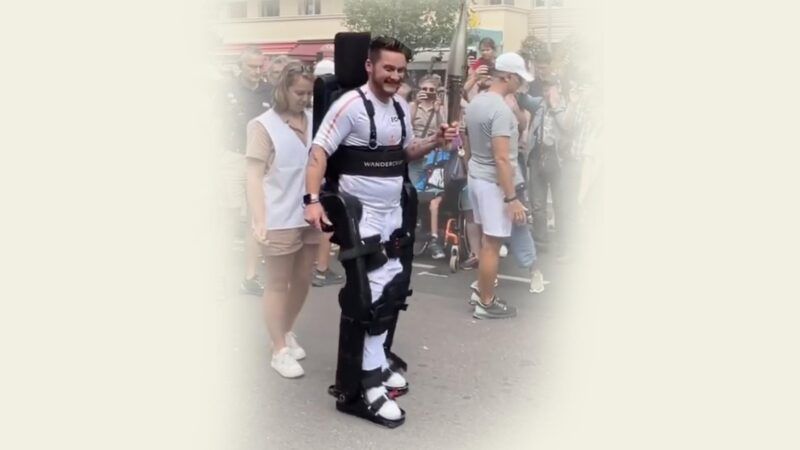This Revolutionary Robotic Suit Enabled a Paralyzed Man To Carry the Olympic Torch
Wandercraft, the French company that developed the exoskeleton suit, recently got FDA approval to use them for stroke rehab in the U.S.

If Kevin Piette ever had any dreams of making it to the Olympics, they likely ended when the young tennis player was paralyzed in a motorcycle accident more than a decade ago.
This week, however, Piette walked through the streets of Paris while carrying the Olympic flame—thanks to a genuinely awesome robotic exoskeleton.
The video pretty much tells the whole story, so please enjoy:
Kevin Piette, paraplegic since an accident, made history today by carrying the Olympic flame with his exoskeleton! ????
— Kevin W. (@Brink_Thinker) July 23, 2024
According to the Olympics' official website, the 36-year-old Piette is one of the first test "pilots" for these exoskeleton suits, which are currently being used for rehab but might soon be available for personal use. Piette has taken part in "cybathlons"—competitions "in which people with disabilities use assistive technologies to carry out everyday activities."
Wandercraft, the French-based company that developed the "Atalante X" exo-suit Piette wears, says its design is "the first and only self-stabilizing exoskeleton in the market for personal everyday use to help impaired people walk hands free in their own communities." Since gaining approval from the European Union's health regulators in 2019, Wandercraft says its devices have been used to help over 650 patients across over 5,000 sessions.
The company received approval from the Food and Drug Administration (FDA) in 2022 to use the exoskeleton suit for stroke rehabilitation in the U.S. and has opened a new headquarters in New York City.
The company was co-founded by Jean-Louis Constanza, whose son was suffering from neuropathy and slowly losing the ability to walk.
"When he was five years old, I gave him his first wheelchair and told him I was a robotics engineer and he said I should make a robot that would allow him to walk," Constanza told e-Magazine, which covers medical innovation, in 2022.
If that doesn't hit you right in the feels, then check out how Constanza describes users' reactions to wearing his device for the first time: "It is the moment of standing up with nothing in front of them to stop them falling that makes them laugh or cry—it is always a shock. The act of walking is then a continued exhilaration. Standing in our exoskeleton is not like being verticalized in a frame or standing up in crutches, it is like becoming yourself again."
The Olympics are meant to celebrate outstanding achievements in physical competition. Piette's participation in the torch relay certainly qualifies. But let's save some cheers for the incredible human ingenuity behind Wandercraft's robo-suits—including Constanza, as well as his teams of engineers—that has taken an idea that seems like science fiction and turned it into reality. I can't wait to see people using these exoskeletons to get around American cities. Don't screw this up, FDA!


Show Comments (25)